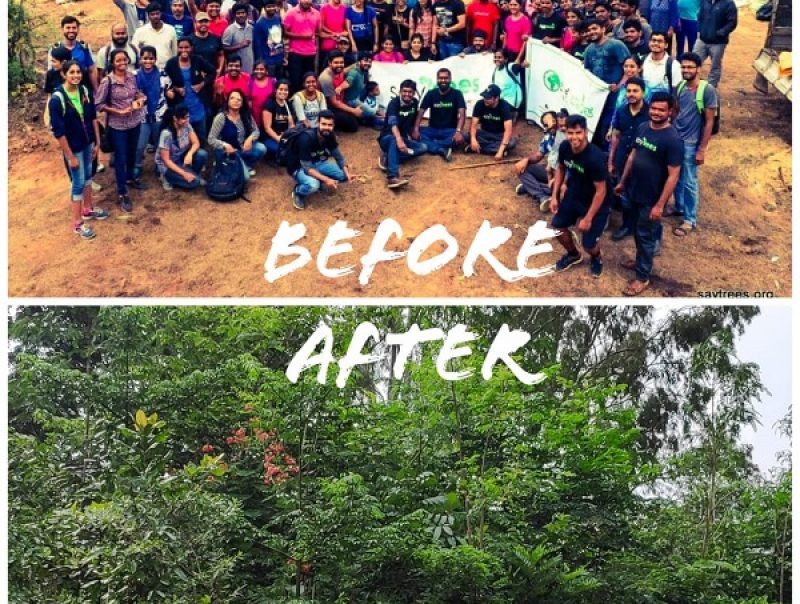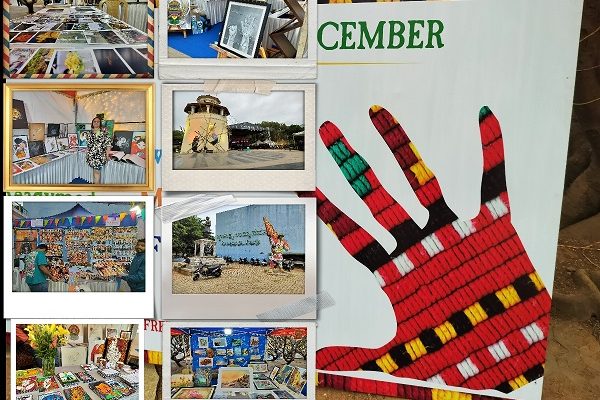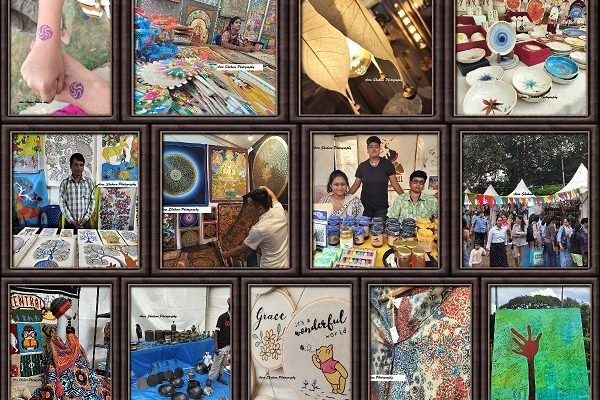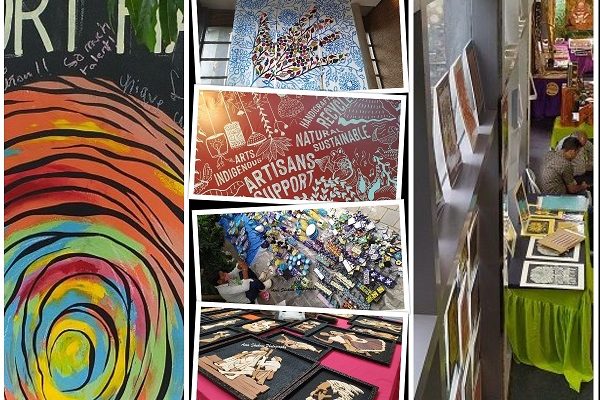SayTrees, a professionally-managed NGO of ordinary people with extraordinary resolve, has been literally sowing seeds of hope through their tree plantation drives in Bangalore and various cities and towns across India. Kapil Sharma, Founder, SayTrees spearheads the NGO along with his committed team members and the support of countless volunteers. In an interview with Asrashaheen.in, Kapil talks about the journey of SayTrees from planting one sapling in 2007 to planting lakhs of them year after year.
The phrase “concrete jungle” has become the identity of our cities ever since commercial misappropriation began replacing sensible town planning. Remember reggae legend Bob Marley’s song “Concrete Jungle” from the 1970’s Catch a Fire album by The Wailers band? The path-breaking Jamaican singer, musician and songwriter’s evocative song is somewhere a reflection of the way our cities are being ripped of their distinct character. Mention this to any Bangalorean, and he/she would be quick to add on to this with an expression of disappointment at the sorry state of the present Garden City that was once famed for its pristine greenery and lakes.
But as they say hope never dies. SayTrees, a professionally-managed non-government organisation (NGO) made of ordinary people with extraordinary resolve, has been literally sowing seeds of hope across India. The NGO started off with its weekend tree plantation drives in 2007 and has now expanded to a variety of initiatives, including education, research, advocacy and sensitisation related to tree plantation, water conservation and environmental preservation. SayTrees urges people to spare some time on weekends towards making our own cities greener. The group pursues volunteer support from ordinary citizens, including children, homemakers, professionals, retired seniors among others.

Planting more than six lakh saplings, SayTrees has created 35+ forests across India! As you sow so shall you reap! Truly, and this has been possible with the NGO adopting various scientific methods of plantation, including the well-known Miyawaki method, which grows saplings 10 times faster and the forest is 30 times denser. (Akira Miyawaki is a Japanese botanist, specializing in the study of forests and seeds.)

Kapil Sharma, Founder, SayTrees has been spearheading the NGO along with his committed team members and the support of countless volunteers. In an interview with Asrashaheen.in, Kapil talks about the journey of SayTrees that began in 2007 by planting one sapling to planting lakhs of them every year. He also presses upon the need to restore urban green cover and work on sustainable solutions.

Excerpts from the interview:
Tell us about when and how SayTrees happened?
I moved to Bangalore in 2001 to do my engineering. It felt like a heaven with trees all around — a true Garden City. A city that never had scorching summers. But this started to change around 2005-06. Trees were being felled for various development projects. Roads that were earlier covered with canopy of trees were now exposed to sun. I could not bear the sight of killing of decades old trees that were critical to our survival. I decided to act as I didn’t want to regret later that I didn’t even try. SayTrees was started in 2007 by planting a single sapling. Now we are planting lakhs of saplings every year.
Myawaki method of planting for dense forest is indeed a boon to today’s greenery-devoid cities. Give us some examples of how SayTrees has made a difference in Bangalore and other cities across India.

Cities are converting to concrete jungles. There is increase of 1055% in concrete area in the city. And there is little space available for trees. The need of the hour is to do more in less space available. This is where Miyawkai method helps us as it gives 30 times better benefit as compared to traditional plantation. This method is best to restore urban green cover by doing more in less available space.
A global crisis like COVID-19 has brought the focus on health and environment. As someone who has initiated conservation projects, what do you think are the learning lessons for people in general and policymakers and corporates at large?
A healthy environment is always best for us. We should not need a pandemic to remind us about it. It only indicates that we have ignored nature. The biggest lesson to learn is that we cannot afford to dismiss environmental issues. Each individual needs to be aware about the importance of nature for our survival. We cannot keep ignoring this, else we are going to regret and there will be no turning back. People need to stop wasting food, water, electricity, gas and oil. Policymakers should ban plastic. As a nation, we need to reduce carbon emission and work towards sustainable solutions, considering next 100 years in mind.
The present situation has impacted SayTrees regular plantation drives; until things get back to normal, how can volunteers do their bit?
Volunteers can spread the word online. Let our voice reach more and more individuals around us.
Tell us about how CSR can play a major role in environment conservation and reducing carbon footprint. Corporates are coming forward but surely there is scope for more. How would you urge the corporates to adopt eco-friendly behaviour as a way of life and not just for tokenism?
Corporates need to start looking at the bigger picture. They need to see how their support can bring considerable change in the society. Support projects that are sustainable and have measurable outcome. Corporates should also consider joining hands with NGOs such as ours to achieve bigger goals.
In your opinion, how can we make the voices of civil society become strong enough to impact decision-making in favour of public welfare, especially in wake of many government/private projects planning to fell trees for clearing the space?

The voices have been very strong and we have seen many projects being cancelled because of resistance from nature lovers. I feel protecting nature should be the way of life and general state of mind. Decision makers should be nature lovers in the first place. Before deciding on any project, environment should be given utmost importance and all aspects should be considered. If cost is a deciding factor then the cost of environmental destruction should be considered in the first place.




